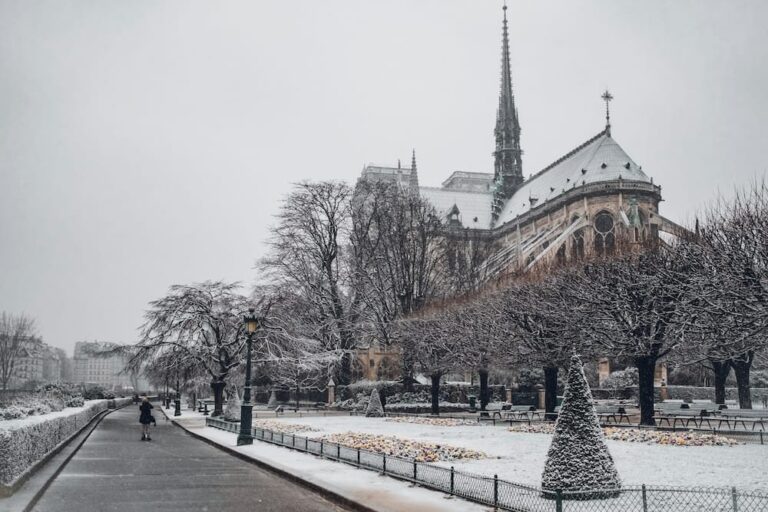adjective, comparative, superlative
Adjectives are describing words that modify nouns. French adjectives agree in gender and number with the noun they modify. Most adjectives are placed after the noun, though some common ones go before. Adjectives have regular and irregular forms, and many can be used in comparisons.
Basic adjective agreement
A typical masculine adjective adds -e for the feminine and -s for the plural:
- Un livre intéressant (An interesting book)
- Une histoire intéressante (An interesting story)
- Des livres intéressants (Interesting books)
- Des histoires intéressantes (Interesting stories)
Some adjectives change more significantly. For example:
- Actif → active (feminine)
- Bon → bonne
- Beau → belle
- Nouveau → nouvelle
Comparative adjectives
To compare two things, French uses a structure with plus (more), moins (less), or aussi (as), followed by the adjective, then que (than/as):
- Il est plus grand que son frère. (He is taller than his brother.)
- Ce film est moins intéressant que le précédent. (This film is less interesting than the previous one.)
- Elle est aussi belle que toi. (She is as beautiful as you.)
The adjective agrees with the noun it describes, not the noun it is compared to:
- Cette robe est plus jolie que l’autre. (This dress is prettier than the other one.)
- Ces pommes sont aussi bonnes que celles d’hier. (These apples are as good as yesterday’s.)
Irregular comparatives
Some adjectives have irregular comparative forms. The most common are:
- bon (good) → meilleur (better)
- mauvais (bad) → pire or plus mauvais (worse)
Examples:
- Ce gâteau est meilleur que celui de la semaine dernière. (This cake is better than last week’s.)
- Le temps est pire qu’hier. (The weather is worse than yesterday.)
Note that meilleur is an adjective, while mieux is an adverb:
- Il chante mieux que moi. (He sings better than me.)
- Son idée est meilleure. (His idea is better.)
Superlative adjectives
To form the superlative, use le plus, la plus, les plus (the most) or le moins, la moins, les moins (the least) before the adjective. The article agrees with the noun.
- C’est le restaurant le plus cher de la ville. (It’s the most expensive restaurant in the city.)
- Elle est la plus gentille de toutes. (She is the kindest of all.)
- Ce sont les élèves les moins attentifs. (They are the least attentive students.)
If the adjective comes before the noun, the superlative structure changes slightly:
- C’est le plus beau tableau du musée. (It’s the most beautiful painting in the museum.)
- Il a la meilleure réponse. (He has the best answer.)
The irregular superlative forms mirror the irregular comparatives:
- bon → le meilleur / la meilleure / les meilleurs / les meilleures
- mauvais → le pire / la pire / les pires
Examples:
- C’est la meilleure solution. (This is the best solution.)
- Ce film est le pire que j’aie jamais vu. (This film is the worst I have ever seen.)
The subjunctive with the superlative
The subjunctive mood is often used after a superlative when the speaker wishes to express a subjective judgement, emotion, or uncertainty. It is typically triggered when the superlative implies a unique, hypothetical, or non-confirmed quality.
The construction usually follows this pattern:
superlative + que + subordinate clause in the subjunctive
Examples:
- C’est le meilleur film que j’aie vu. (It’s the best film that I’ve seen.)
- Il est le plus intelligent que je connaisse. (He is the most intelligent [person] I know.)
- C’est l’idée la plus originale qu’on puisse imaginer. (It’s the most original idea one could imagine.)
In these cases, the subjunctive is used because the quality being described is presented as subjective, not as an established fact. The speaker is expressing a personal judgment or evaluation, not an objective truth.
If the speaker simply states a fact with no emotional or subjective tone, the indicative may be used instead. However, in most superlative clauses with que, especially after expressions like le seul… que, le premier… que, and le dernier… que, the subjunctive is preferred:
- C’est la seule réponse qui soit acceptable. (It is the only answer that is acceptable.)
- Il est le dernier candidat que nous ayons vu. (He is the last candidate we saw.)
Examples in context
- Mon frère est plus organisé que moi. (My brother is more organised than me.)
- Cette chambre est moins lumineuse que l’autre. (This room is less bright than the other one.)
- Ils sont aussi rapides que leurs concurrents. (They are as fast as their competitors.)
- Elle a choisi la robe la plus élégante. (She chose the most elegant dress.)
- Nous avons eu la pire expérience possible. (We had the worst experience possible.)
- C’est le plus beau poème que j’aie jamais lu. (It is the most beautiful poem I have ever read.)
- Voilà le seul homme qui puisse nous aider. (Here is the only man who can help us.)






